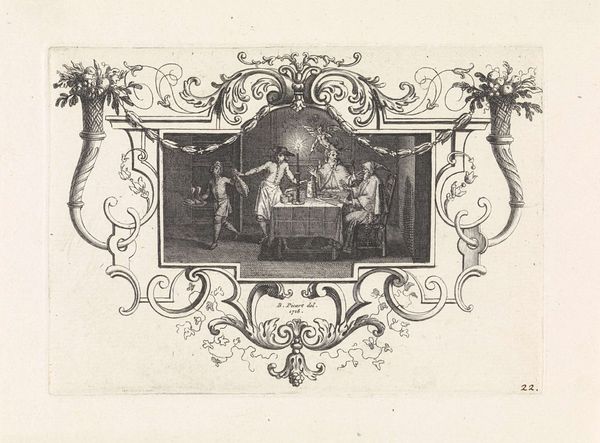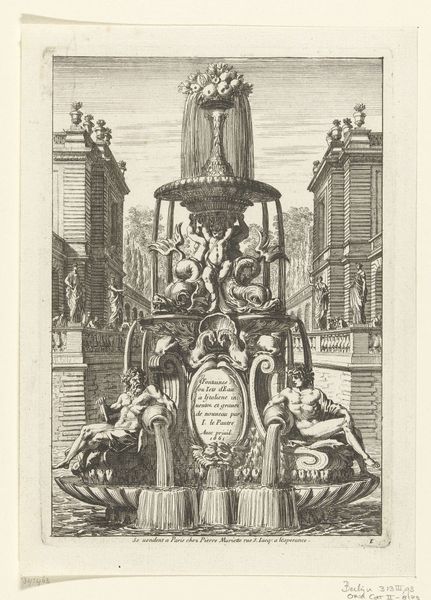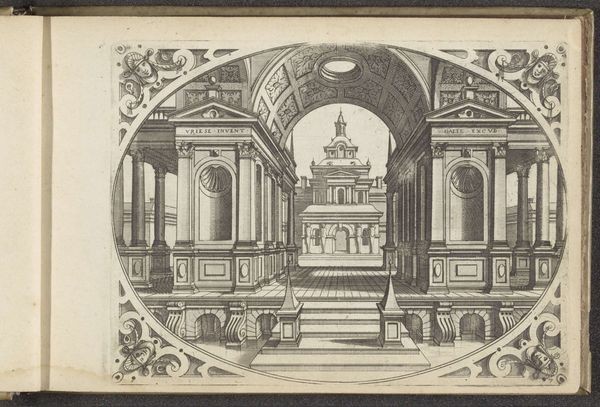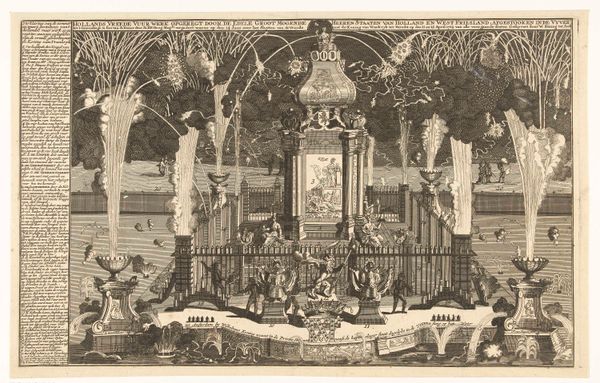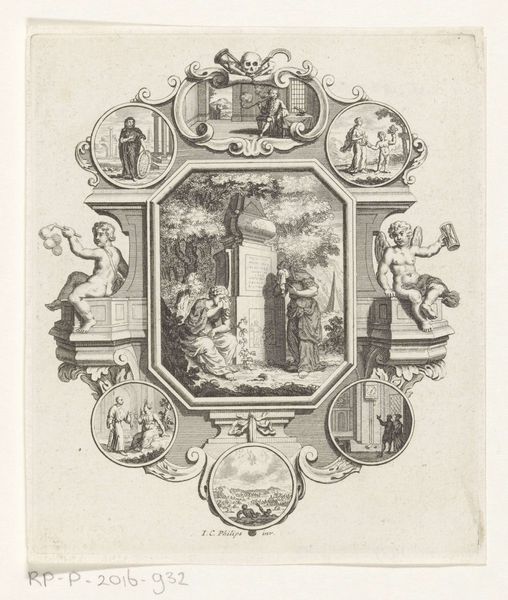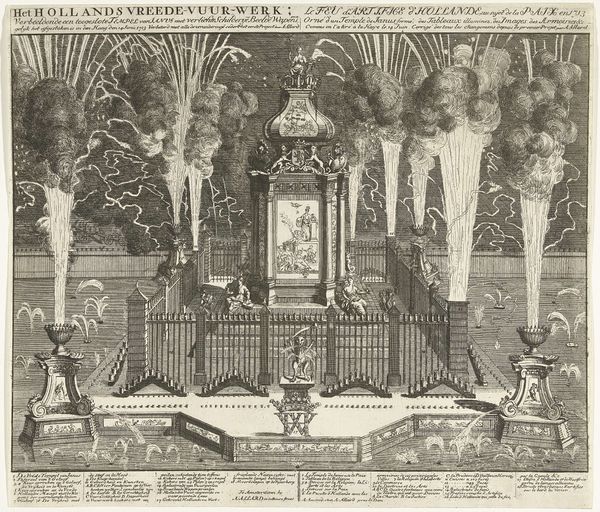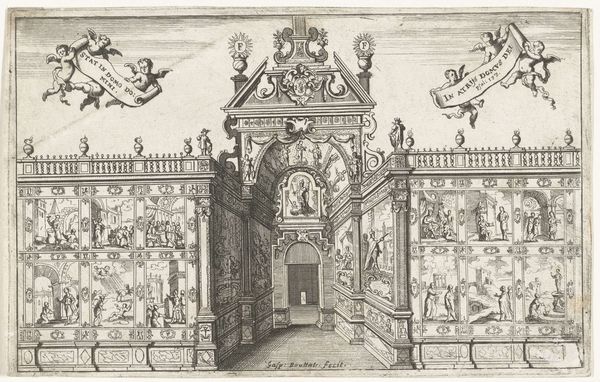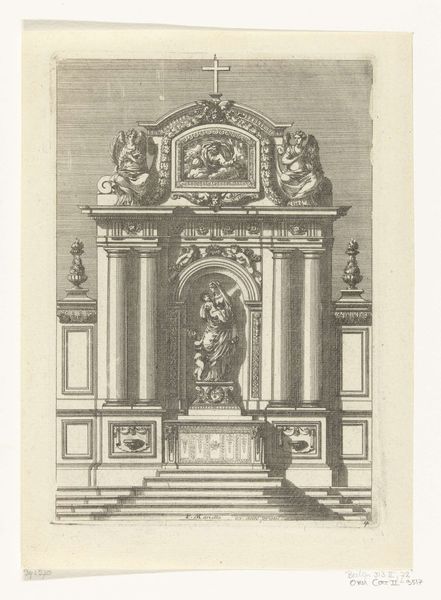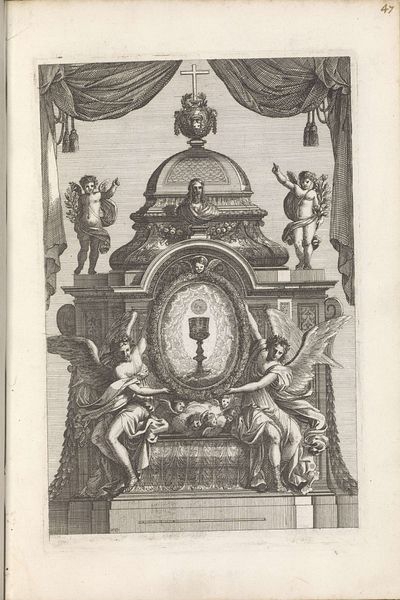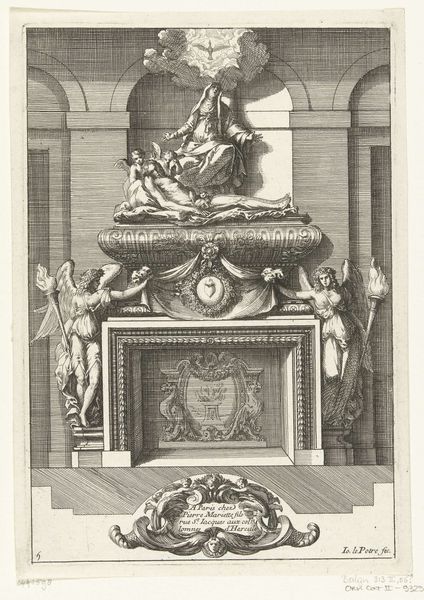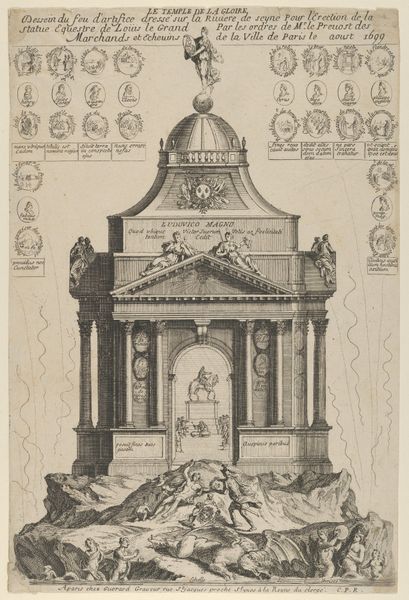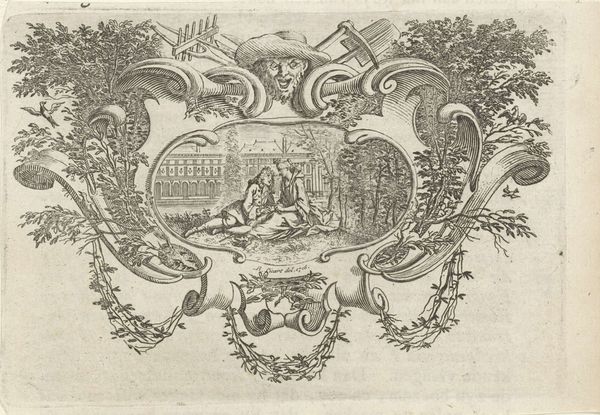
Dimensions: height 96 mm, width 141 mm
Copyright: Rijks Museum: Open Domain
Curator: What an intriguing print! The Rijksmuseum holds this work by Abraham Delfos, dating back to 1763. It’s titled "Allegory with Justa and Rufina and Objects from the Wool Trade.” Editor: Immediately striking, isn't it? The sheer amount of detail, meticulously rendered through engraving… you can almost feel the different textures, from the wool to the paper itself. The visual complexity is fascinating. Curator: Indeed! The artist combines religious iconography, with Justa and Rufina, the patron saints of Seville, standing before the Giralda. We can see everyday items associated with the wool trade that defined Seville’s economy, and stacks of what seems to be merchandise in the background, as well as wool. All carefully integrated within the visual culture. Editor: Seeing those stacks of merchandise in such close proximity to the holy figures immediately grounds the artwork. We tend to forget now, with art separated and displayed, that the church played such a strong role in economics as they related to making. Delfos seems eager to display labor, but almost as important are the trading vessels in the harbor as signs of industry and mercantile power. It challenges our preconceptions of high art, no? Curator: Absolutely! We're witnessing a negotiation between the spiritual and the material—commerce and the sacred are not presented as antithetical. It provides insight into the public perception and values of 18th-century Seville. Justa and Rufina were, after all, martyred for refusing to sell their pottery for pagan worship, further strengthening their connection to righteous labor. The integration into broader networks, political influences are worth exploring too. Editor: Examining how something is produced always provides such a valuable context. By placing the economic backbone of the city directly alongside its religious figures, Delfos is speaking to how both facets upheld its civic identity. Curator: Ultimately, the piece offers a window into how social institutions helped promote the wealth of the elite in that time. Editor: It all seems very… transactional. And now, knowing more about the history embedded within the print, I see the artist pointing out where true value resides in their world.
Comments
No comments
Be the first to comment and join the conversation on the ultimate creative platform.

